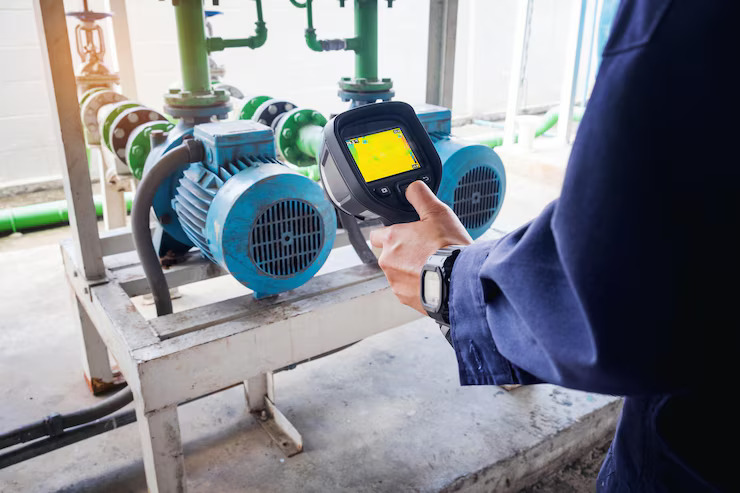In today’s precision-driven industries, from aerospace and automotive to pharmaceuticals and electronics, accurate measurements are essential for quality assurance, safety, and regulatory compliance. Calibration ensures that instruments deliver precise readings, but not all calibration is equal. To guarantee international standards of accuracy and reliability, many organizations rely on NABL-accredited calibration services. These services uphold the highest benchmarks for quality and traceability, as defined by the National Accreditation Board for Testing and Calibration Laboratories (NABL) in accordance with ISO/IEC 17025:2017.
Importance, process, benefits, and industries that depend on NABL calibration services to ensure operational excellence and compliance.
What is NABL Accreditation?
The National Accreditation Board for Testing and Calibration Laboratories (NABL) is an autonomous body under the Quality Council of India (QCI). It is responsible for accrediting testing and calibration laboratories in India. NABL accreditation is based on the globally recognized ISO/IEC 17025 standard, which outlines general requirements for the competence of testing and calibration laboratories.
When a lab is NABL-accredited, it demonstrates that the lab:
- Operates according to international standards.
- Uses traceable measurement standards.
- Employs qualified personnel and calibrated equipment.
- Has documented procedures and quality systems.
This accreditation builds trust in the calibration results provided by the lab and ensures those results are recognized nationally and internationally.
What Are NABL Calibration Services?
NABL calibration services refer to calibration procedures conducted by laboratories that are accredited by NABL. These services ensure that measuring instruments and equipment provide readings that are accurate and consistent with national or international standards.
The scope of NABL calibration services includes:
- Mechanical calibration (e.g., pressure gauges, torque wrenches, weighing scales)
- Electrical calibration (e.g., multimeters, power analyzers)
- Thermal calibration (e.g., thermometers, temperature sensors)
- Dimensional calibration (e.g., calipers, micrometers)
- Flow and volume calibration (e.g., flow meters)
- Time and frequency calibration (e.g., timers, frequency counters)
Why Are NABL Calibration Services Important?
1. Accuracy and Reliability
Precision is critical in most industries. A small deviation in measurement can lead to defective products, safety hazards, or failed inspections. NABL-accredited calibration ensures the tools and instruments used in production or testing give correct and reliable readings.
2. Compliance with Regulatory Requirements
Many industries, especially pharmaceuticals, aviation, defense, and food manufacturing, are governed by strict quality standards. Regulatory bodies often require that only NABL-certified labs perform calibration to ensure adherence to national or international compliance frameworks.
3. International Recognition
NABL is a signatory of international agreements such as ILAC (International Laboratory Accreditation Cooperation). This ensures that calibration certificates issued by NABL-accredited labs are recognized globally, easing trade and regulatory acceptance in international markets.
4. Audit-Ready Documentation
NABL-accredited labs provide detailed calibration certificates with measurement uncertainty, traceability data, and standards used. This documentation is essential during audits by ISO, FDA, BIS, or other quality management bodies.
5. Risk Mitigation
Using uncalibrated or inaccurately calibrated instruments can lead to product recalls, quality failures, safety incidents, and reputational damage. Regular NABL-calibrated servicing minimizes these risks by maintaining operational accuracy.
The Calibration Process in a NABL Lab
- Instrument Receipt and Inspection: The equipment is logged and inspected for physical damage or faults.
- Environmental Stabilization: The equipment is brought to a controlled temperature/humidity environment to ensure consistent calibration conditions.
- Calibration Against Standards: The instrument is tested against national or international standards using traceable master instruments.
- Adjustment (if required): If the readings deviate from tolerance, adjustments are made to bring them back into acceptable limits.
- Recording of Results: Readings and deviations are recorded in a format as per ISO/IEC 17025.
- Certificate Generation: A calibration certificate is issued with all relevant details: instrument details, calibration date, due date, measurement uncertainty, traceability, and technician signatures.
Key Features of a NABL Calibration Certificate
A valid NABL calibration certificate includes:
- Unique certificate number
- Date of calibration and next due date
- Details of equipment calibrated (model, serial number)
- Calibration results and measured values
- Measurement uncertainty
- Reference standards used
- Traceability to national/international standards
- Name and signature of the responsible technician
- NABL logo and lab accreditation number
This certificate serves as legal proof of compliance for audits, inspections, and client verifications.
Industries That Rely on NABL Calibration Services
- Pharmaceuticals and Life Sciences
- Automotive and Aerospace
- Oil and Gas
- Food and Beverage Manufacturing
- Power and Energy
- Construction and Infrastructure
- Telecommunications
- Healthcare and Hospitals
- Defense and Research Laboratories
These industries depend on accurate measurements for product development, quality control, safety testing, and compliance — all enabled by regular NABL-certified calibration.
How Often Should You Calibrate?
Calibration frequency depends on:
- Manufacturer recommendations
- Frequency of equipment use
- Regulatory guidelines
- Criticality of the application
- Previous calibration history
Typically, calibration is done once a year, but high-use or mission-critical instruments may require calibration every 3 to 6 months.
Choosing the Right NABL Calibration Lab
When selecting a NABL-accredited calibration provider, consider:
- Scope of accreditation (match with your equipment needs)
- Lab location and logistics
- On-site calibration availability
- Turnaround time
- Calibration certificate format
- Post-service support and reminders
You can verify a lab’s accreditation and scope by visiting the official NABL website (www.nabl-india.org).
Conclusion
In a world where precision matters, NABL calibration services offer peace of mind, ensure regulatory compliance, and protect your business from costly errors. Whether you’re a manufacturing giant or a small testing lab, ensuring that your instruments are calibrated by a NABL-accredited lab is a smart investment in quality, accuracy, and long-term success.
With global recognition, rigorous standards, and technical expertise, NABL-accredited labs are the gold standard for reliable and traceable calibration services in India.


